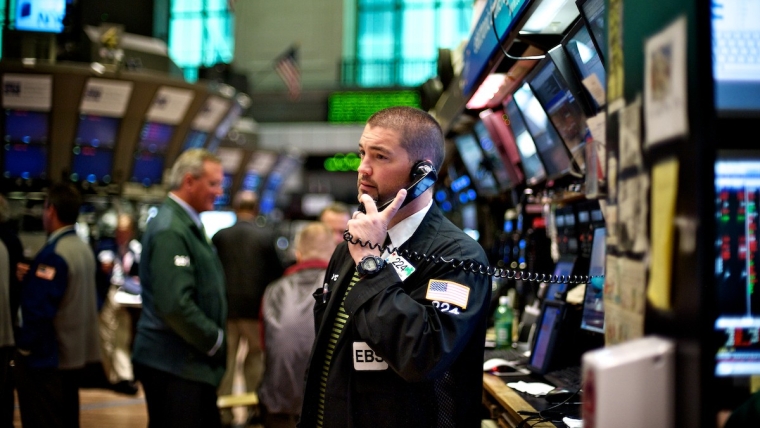
It was all about the US CPI report overnight. Another upside inflation surprise has seen a further jump in Fed rate hike expectations and US rates, with the US 10-year breaking above 2% for the first time since 2019. St Louis Fed President Bullard has added fuel to the move by coming out in support of a 50bps rate hike in March, which the market is now almost fully pricing. Equities have come under pressure amidst the move higher in rates while the USD is surprisingly weaker, which has seen the NZD push above 0.67. NZ rates are likely to hit fresh multi-year highs today.
January was the eighth month in the past ten that US CPI inflation has surprised on the upside. Headline inflation increased 0.6% on the month and 7.5% over the past year, the highest rate of annual inflation in 40 years. CPI ex food and energy rose 6% y/y, above expectations and also a 40-year high. Alternative core inflation measures were equally strong. The Cleveland Fed’s trimmed mean core inflation measure, which excludes outliers at both ends of the price distribution, hit its highest level since at least the early 1980s, at 5.4%, while the median CPI measure reached 4.25% y/y, its highest level since the early 1990s.
Last year, the narrative around high inflation revolved around extremely strong demand for goods at the same time as supply chain issues crippled production. The Fed’s initial thinking was that these pressures would prove ‘transitory’ as supply chain pressures eventually abated. However, recent inflation prints have shown clear evidence of broadening inflation pressure beyond the goods sector and those categories most acutely affected by supply chain issues, such as new and used cars. For instance, the annual rate of inflation on shelter, which accounts for roughly 40% of the core CPI index is now running at 4.4%, its highest level since the early 1990s. More timely data on rents in the US suggests shelter inflation will remain extremely elevated this year. Additionally, wage growth continues to accelerate, creating the risk that inflation in the services sector, for which labour costs are the key input cost, could continue to rise. The Atlanta Fed’s Wage Growth Tracker, one of the most reliable wage measures, shows annual wage growth above 5%, its highest level since 2001. The Fed has belatedly recognised that inflation will not normalise to its target without policy tightening, with Powell formally “retiring” the ‘transitory’ inflation label in December.
In the past half an hour, St Louis Fed President Bullard has come out in support of a 50bps rate hike in March, the first Fed official to publicly back such a move, and 100bps of hikes by July. Bullard is widely seen as something of a maverick on the Fed and his views are not always representative of the core of committee, but the headlines have seen a further increase in bond rates and the USD recover some of its earlier losses.
High inflation was the key factor behind the Fed’s hawkish pivot late last year and the market is now betting that the Fed will need to accelerate the pace of its planned tightening. The market now prices a roughly 85% chance of a 50bps Fed hike in March and more than six hikes in total by the end of the year. As recently as September, the market was expecting the first hike to take place in 2023. The White House appeared to rubber stamp a hike next month, saying it was “appropriate” for the Fed to “recalibrate” its monetary policy support.
The upside surprise to CPI and Bullard’s comments have added momentum to the global bond sell-off, with further large increases in global bond yields overnight. In the US, the bond sell-off has been led by the short end of the curve, with the 2-year rate up 19bps to 1.55% while the 10-year rate is 10bps higher and has broken above 2% for the first time since 2019. These moves have cascaded to other markets, with the German 10-year rate 7bps higher, at 0.28%, and the yield on the Australian 10-year bond future up 13bps overnight. NZ rates will open sharply higher again this morning.
Equity markets have had a volatile session but are now down on the day, by around 0.9% on the S&P500 and NASDAQ. Sector rotation is evident, with the Energy and Materials sectors showing gains and bank stocks benefiting from the increase in rates (KBW bank index +0.9%), which is perceived as supportive of net interest margins. Tech stocks and ‘bond proxies’, such as utilities, have underperformed.
Curiously, the increase in Fed rate expectations hasn’t provided much support to the USD. After an initial spike higher, the BBDXY index is now 0.2% lower on the session. The EUR made a fresh three-month high, just below 1.15, although it has since reversed to 1.1470 after Bullard’s comments. The NZD reached as high as around 0.6730 overnight, assisted by higher commodity prices, although it has eased back to 0.67 as we write this, still 0.2% higher over the past 24 hours.
The JPY and Swedish krona are the two exceptions to the weaker USD theme overnight. USD/JPY has increased 0.4% to around 116, near its highest level since early 2017. The SEK is down more than 1% after a dovish policy assessment by the Riksbank, which indicated it expects to raise rates in the second half of 2024.
Turning to local developments, NZ rates were slightly lower yesterday, by 1-2bps on the swap curve. But rates are set to push sharply higher again today on the back of overnight global movements. The 10-year swap rate could hit 3% for the first time since late 2018 today. The government bond curve had a steepening bias yesterday with investors seemingly cautious about long-term bonds amidst the global bond sell-off. Yesterday’s tender of $100m 15-year government bonds drew just $116m of bids.
The RBNZ’s inflation expectations survey is released this afternoon. 2-year ahead inflation expectations, which tend to track the direction in headline inflation, seem likely to increase from their last reading of 2.96%. The RBNZ has previously said that medium-term measures are a better gauge of whether inflation expectations are anchored, so it’s worth keeping an eye on the 5-year and 10-year ahead series, both of which were close to 2% last quarter. The sample size of the survey is very small, which raises questions about how representative the results are, but nonetheless it has provoked market reactions in the past.

We welcome your comments below. If you are not already registered, please register to comment.
Remember we welcome robust, respectful and insightful debate. We don't welcome abusive or defamatory comments and will de-register those repeatedly making such comments. Our current comment policy is here.